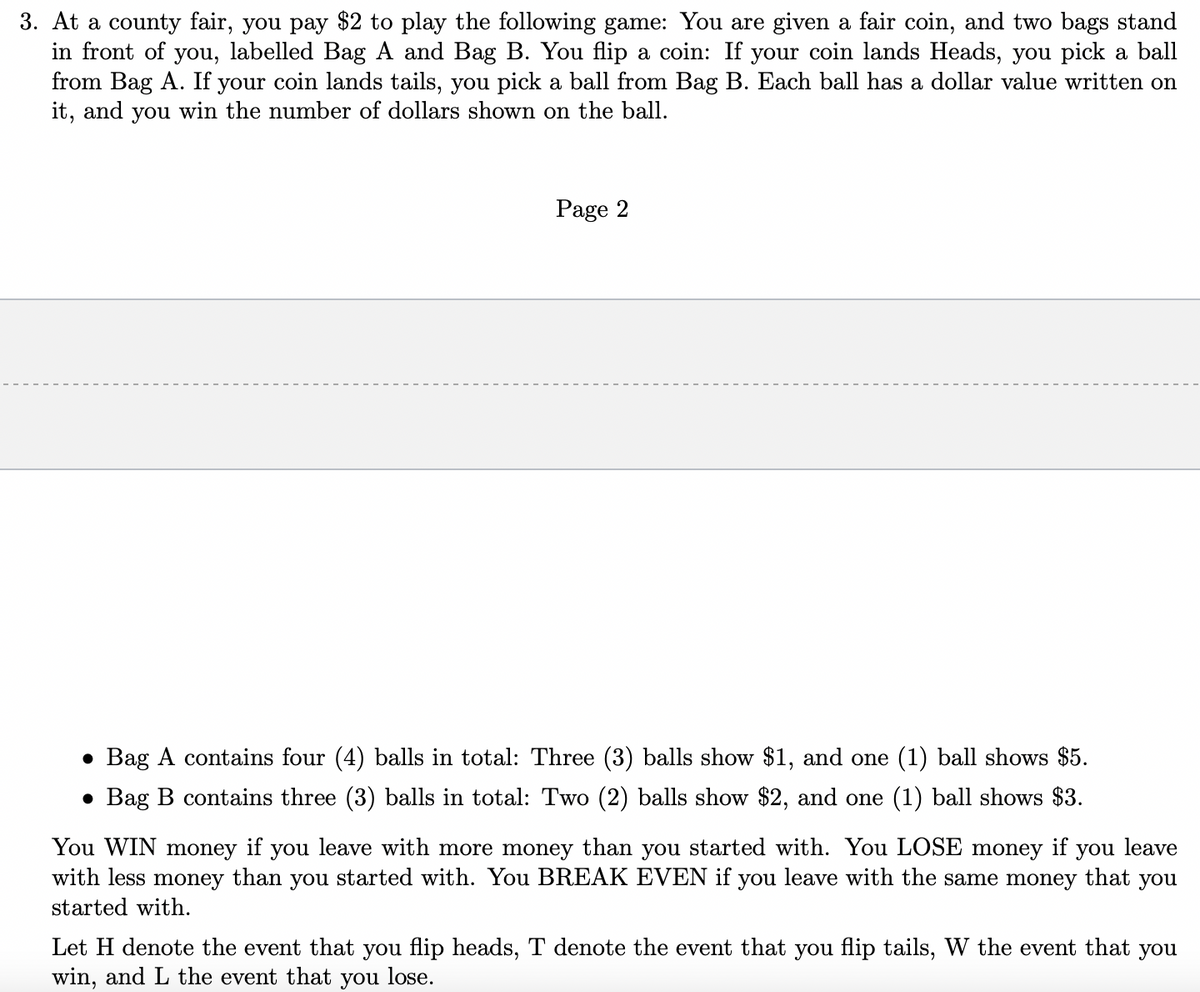Let H denote the event that you flip heads, T denote the event that you flip tails, W the event that you win, and L the event that you lose. (i) you flipped a Heads? You pay to play exactly one game. What is the probability that you WIN given that (ii) You pay to play exactly one game. What is the probability that you WIN? (iii) What are the expected winnings from playing one game?
Let H denote the event that you flip heads, T denote the event that you flip tails, W the event that you win, and L the event that you lose. (i) you flipped a Heads? You pay to play exactly one game. What is the probability that you WIN given that (ii) You pay to play exactly one game. What is the probability that you WIN? (iii) What are the expected winnings from playing one game?
A First Course in Probability (10th Edition)
10th Edition
ISBN:9780134753119
Author:Sheldon Ross
Publisher:Sheldon Ross
Chapter1: Combinatorial Analysis
Section: Chapter Questions
Problem 1.1P: a. How many different 7-place license plates are possible if the first 2 places are for letters and...
Related questions
Question

Transcribed Image Text:3. At a county fair, you pay $2 to play the following game: You are given a fair coin, and two bags stand
in front of you, labelled Bag A and Bag B. You flip a coin: If your coin lands Heads, you pick a ball
from Bag A. If your coin lands tails, you pick a ball from Bag B. Each ball has a dollar value written on
it, and you win the number of dollars shown on the ball.
Page 2
• Bag A contains four (4) balls in total: Three (3) balls show $1, and one (1) ball shows $5.
• Bag B contains three (3) balls in total: Two (2) balls show $2, and one (1) ball shows $3.
leave with more money than you started with. You LOSE money
with less money than you started with. You BREAK EVEN if you leave with the same money that you
You WIN
money
if
you
if
you leave
started with.
Let H denote the event that you flip heads, T denote the event that you flip tails, W the event that you
win, and L the event that you lose.

Transcribed Image Text:Let H denote the event that you flip heads, T denote the event that you flip tails, W the event that you
win, and L the event that you lose.
(i)
you flipped a Heads?
You pay to play exactly one game. What is the probability that you WIN given that
(ii)
You pay to play exactly one game. What is the probability that you WIN?
(iii)|
What are the expected winnings from playing one game?
Expert Solution
This question has been solved!
Explore an expertly crafted, step-by-step solution for a thorough understanding of key concepts.
This is a popular solution!
Trending now
This is a popular solution!
Step by step
Solved in 2 steps with 2 images

Recommended textbooks for you

A First Course in Probability (10th Edition)
Probability
ISBN:
9780134753119
Author:
Sheldon Ross
Publisher:
PEARSON


A First Course in Probability (10th Edition)
Probability
ISBN:
9780134753119
Author:
Sheldon Ross
Publisher:
PEARSON
